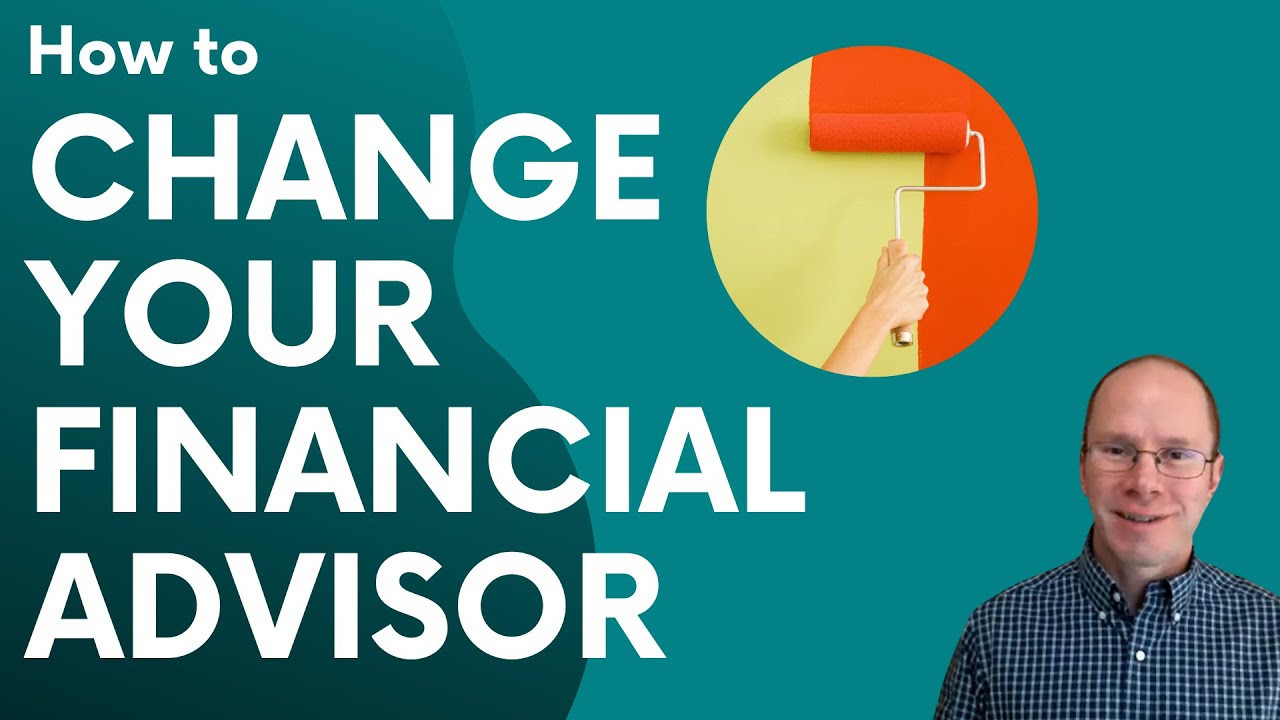How to Change a Financial Advisor with 7 Easy Steps

There are many people who think about switching financial advisors. According to research firm Spectrem Group, nearly 60% of investors have switched advisors at some point. There are many reasons why you might want to change financial advisors. So how to change a financial advisor? This article will guide you.
Why do you need to change your financial advisor?
Bad communication
As you communicate with your advisor, pay attention to the frequency and quality of the conversations. You should interact with your advisor regularly. Quality communication is very important. It matters if you don’t feel comfortable sharing concerns with your advisor, or you don’t feel like your advisor is listening and responding appropriately.

Do not have the same opinion
Some advisors are people who time the market to trade regularly to make short-term profits. Others play the long-term game, picking quality stocks that are poised to rise in price for years or decades. Whatever approach you prefer, your advisor must be on the same page. If you are not of the same opinion, change is sooner or later.
Low performance
A portfolio that is consistently underperforming is one of the most common reasons to find a new financial advisor. For better performance, choose an experienced advisor to ensure all your goals are achieved.

Do not listen
You are the one in need of advice because you have questions or concerns. You have the right to request to receive the service you need. But financial advisors don’t listen to you, they just do what they want. It makes you feel uncomfortable and resentful for not being respected.
Not adapting to your changing situation
The reality is that your life circumstances change from time to time, and the goals and plans you set when you’re 45 won’t be the same as when you’re 55, 65, or even 75. Your financial advisor. should understand that and be able to adapt your plan to the new reality so you can continuously optimize your performance.
Unreasonably high cost
Many financial advisors charge around 1% to manage your liquid investment assets. However, there are many other costs and fees that they may or may not tell you about. You need to consider this, because you can lose tens or hundreds of thousands per year from these expenses, depending on the size of your portfolio.
Lack of transparency
Haven’t received any reports for a long time? Can’t get answers to straightforward inquiries you have a right to receive? Not getting any explanation despite repeated requests? An advisor who can’t be upfront about what’s going on with your money is an advisor who probably shouldn’t be managing your money. Because transparency is crucial to building trust.
How to change a financial advisor?
If you don’t know how to change a financial advisor, read on to learn the following steps:
- Step 1: Check the fee
Before switching issues, find out if you will have to pay a termination fee and how much it will cost. Some investment agreements include a termination fee. Also, many advisors are fee-based. Find out if they will scale their fees. Make sure the total fee you are paying is reasonable.
- Step 2: Get a copy of the reports
Get all your tax returns and records for as many years as possible. And make sure you have a cost basis for any investment, because if you end up selling anything as part of the transfer, you’ll be subject to capital gains tax.
- Step 3: Find out if any investments are proprietary
There are a number of possible reasons, one of which is that your previous financial advisory firm offers exclusive investments that are only available through them. So if you leave, you have to sell them and start a new investment with your new advisor. This is a positive change as it gives a fresh start and gives the new advisor a chance to change your portfolio plan.

- Step 4: Check Tax Consequences
Generating capital gains taxes is perhaps the most likely tax consequence. But there may also be early withdrawal penalties or other taxes depending on what you have to free yourself from to switch to a new financial advisor. It’s also possible that you won’t owe any taxes.
- Step 5: Find a new mentor
Finding a new financial advisor can take several months. Take your time to identify the right people who provide the right products and services. Learn from what happened with the old mentor, so you don’t have to repeat the process.
- Step 6: Consult with a new advisor
Ask your new advisor to review your account statements and identify any assets owned by the old company or non-transferable. You will have to sell these and convert them to cash.
- Step 7: Notice to a former financial advisor
This is common courtesy. You should be clear with the old person so that there are no problems before working with the new person. Additionally, keeping lines of communication open will make the transition to a new advisor easier.
How to find a good financial advisor?

First, find out if you really want a financial advisor or a financial planner. You may manage your investments and increase your wealth with the aid of an advisor. The planner will work with you to create a budget and savings plan, plan for a large expenditure in advance, and set aside money for your retirement. Once you’ve decided what type of mentoring you need, ask friends, family, and colleagues for referrals. Then talk to them to choose the one you feel is the best fit. The article “How to Change a Financial Advisor with 7 Easy Steps” has come to an end.
Conclusion
Now you know how to change a financial advisor, right? Replacing your advisor can be a bit difficult, but it’s less frustrating than working with the wrong person in the long run. If someone else can provide you with better financial planning and investment advice, make the switch – even if you incur some fees in the process. The right alternative can set you on a shorter, more enjoyable path to financial freedom.
Read more:
Conclusion: So above is the How to Change a Financial Advisor with 7 Easy Steps article. Hopefully with this article you can help you in life, always follow and read our good articles on the website: mrsadvisors.com





